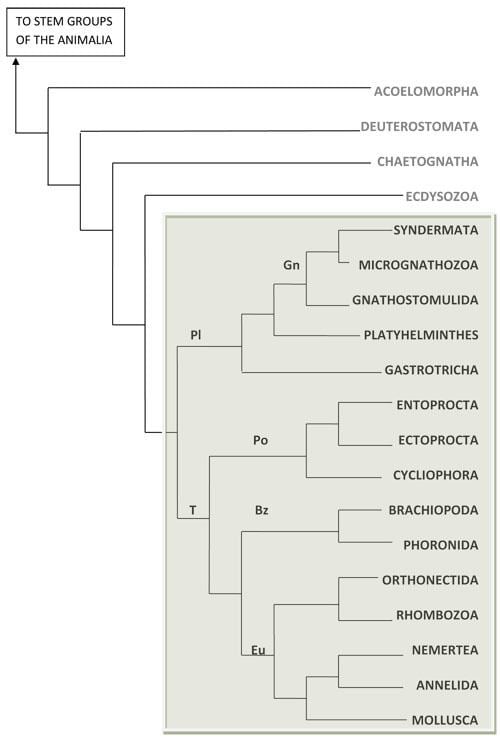 | ||
Similar | ||
Bilateria spiralia clade
The Spiralia are a morphologically diverse clade of protostome animals, including within their number of molluscs, annelids, platyhelminths and other taxa. The Spiralian clade of animals are more commonly referred to as the Lophotrochozoa, although whether these two terms are equivalent is debated, as noted further below. More uncontroversially, the term Spiralia is applied to those phyla that exhibit canonical spiralian cleavage.
Contents
- Bilateria spiralia clade
- Spiralia alone astintroy rmx mp3
- Distribution of spiralian development across phylogeny
- Equivalency of Lophotrochozoa and Spiralia
- References
Spiral cleavage, from which this group draws its name, is a pattern of early development found in most (but not all) members of the Lophotrochozoa.
Spiralia alone astintroy rmx mp3
Distribution of spiralian development across phylogeny
Members of the molluscs, annelids, platyhelminths and nemerteans have all been shown to exhibit spiral cleavage in its classical form. Other Lophotrochozoan phyla (rotifers, brachiopods, phoronids, gastrotrichs, and bryozoans) are also said to display a derived form of spiral cleavage in at least a portion of their constituent species, although evidence for this is sparse.
Equivalency of Lophotrochozoa and Spiralia
Previously, spiral cleavage was thought to be unique to the Spiralia in the strictest sense—animals such as molluscs and annelids which exhibit classical spiral cleavage. The presence of spiral cleavage in animals such as platyhelminths could be difficult to correlate with some phylogenies.
Evidence of the relationship between molluscs, annelids and lophophorates was found in 1995. More recent research has firmly established the Lophotrochozoa as a superphylum within the Metazoa.
With this new understanding of animal phylogeny, the presence of spiral cleavage in polyclad platyhelminths, as well as the more traditional Spiralia, has led to the hypothesis that spiral cleavage was present ancestrally across the Lophotrochozoa as a whole. As a consequence of this hypothesis, Spiralia is occasionally used as a synonym for Lophotrochozoa, although the veracity of this statement is not established.
With the introduction of Platytrochozoa and Rouphozoa, the cladogram is as follows:
